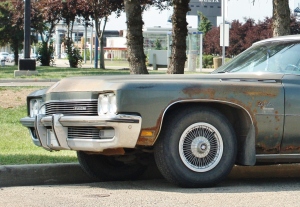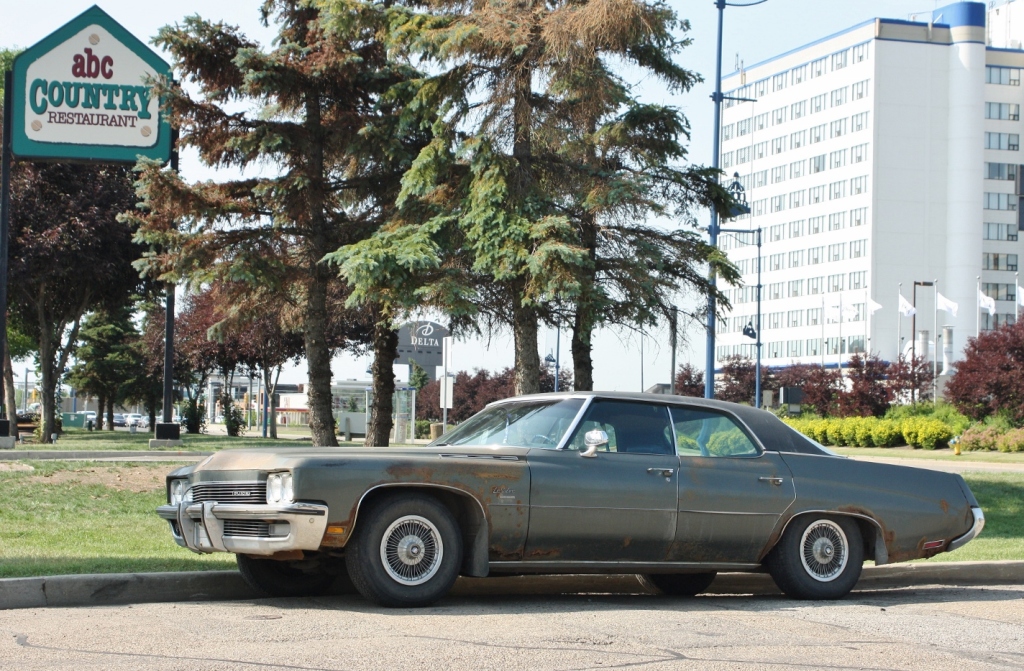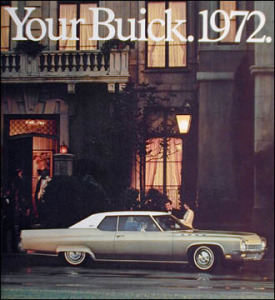Low interest rates have been kind to Canadian car buyers, but they’ve served to slowly eliminate a once-common automotive entity – the beater.
You know, the rust-and-primer coated barge that just needs to make it through one more winter until its owner’s fortunes turn around? An increasingly rare presence in this day and age, and high gas prices and emissions regulations haven’t helped, either.
When so many road-going classics are now of the waxed weekly, Sunday drive variety, you really start to take notice of the beaters – especially the legitimately classic ones.
On a hot, dry day in July, this rusting land yacht beckoned to me from the side of Gateway Boulevard in south-end Edmonton, Alberta. A 1972 Buick Lesabre Custom, this rig truly fit the definition of ‘beater’.
Rusting everywhere along the lower body panels, and with a sun-faded vinyl top, this Brougham Era tank used to be a lot more commonplace. Yet, even with its rust and faded paint, its chrome still sparkled and the overall car still exuded a feeling of solidity, like a grizzled rancher who has no plans of retiring.

The LeSabre had beefier bumpers for ’72, in anticipation of federal 5-mph crash regulations coming down the pipe.
Clearly, this beast had been through many a winter, and the only reason there’s any body left is because Alberta doesn’t salt its roads.
The LeSabre was one of those ubiquitous ’70s full-sizers that, like the Caprice and LTD, seemed to make up a good part of the American landscape during its reign.
The LeSabre, slated above the Century in the Buick lineup but below the Electra 225, ran with few changes from ’71 to ’76, before downsizing shed both length and weight. Under the hood of this version was the trusty 350 c.i.d. V-8, now with Nixon-era EPA-mandated emissions controls.
A 455 c.i.d. V-8 was optional, with a badge on the front fender broadcasting your engine choice to the world. The only transmission available was the 3-speed Turbo-Hydramatic that propelled GMs from the 60s to the 90s.
The ’72s featured beefier bumpers than the previous year, an acknowledgement of the federally-mandated 5 mph bumper requirement that came into effect the following year. The ’73 bumpers weren’t nearly as graceful and form-fitting as those on the ’72.
Times were changing in the American auto industry. Besides smog controls, Nanny State features like ‘fasten seatbelt’ lights and door ajar chimes entered Buick equipment lists in ’72. This was also the last year for full-size Buick ragtops.
The OPEC oil embargo the following year would bring a whole new world of hurt to the industry, one that nearly killed a member of the Big Three by the end of the decade.
Still, seeing this relic 42 years after it rolled of the assembly line is a reminder of how far the industry has come since that turbulent decade. And, we can’t forget that GM, and Buick, lives on today.

